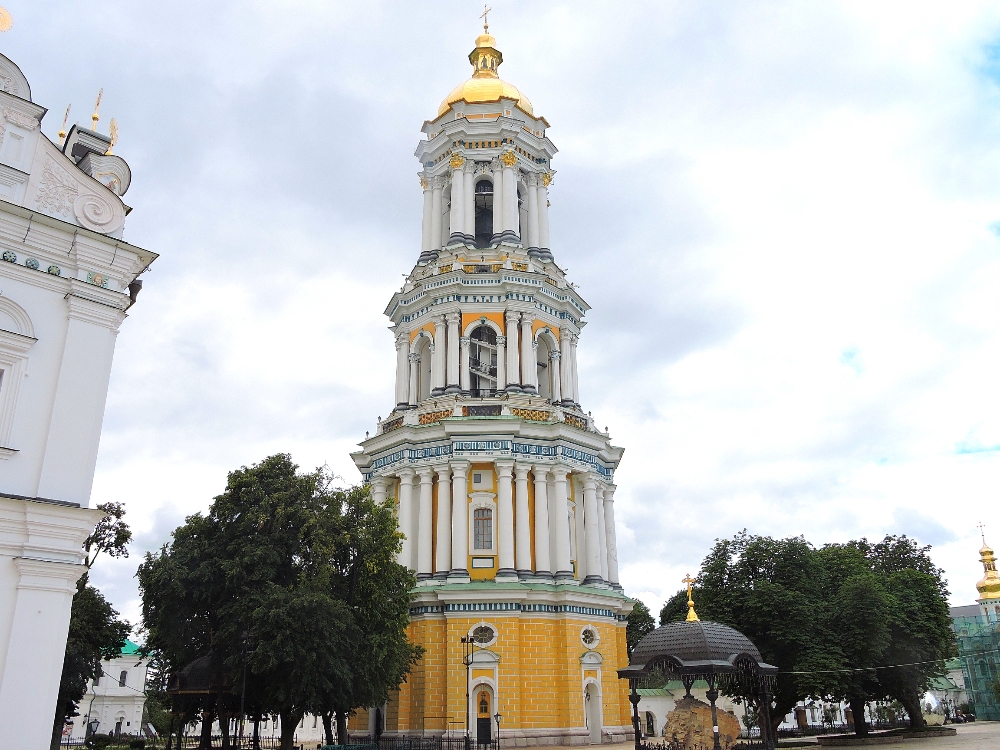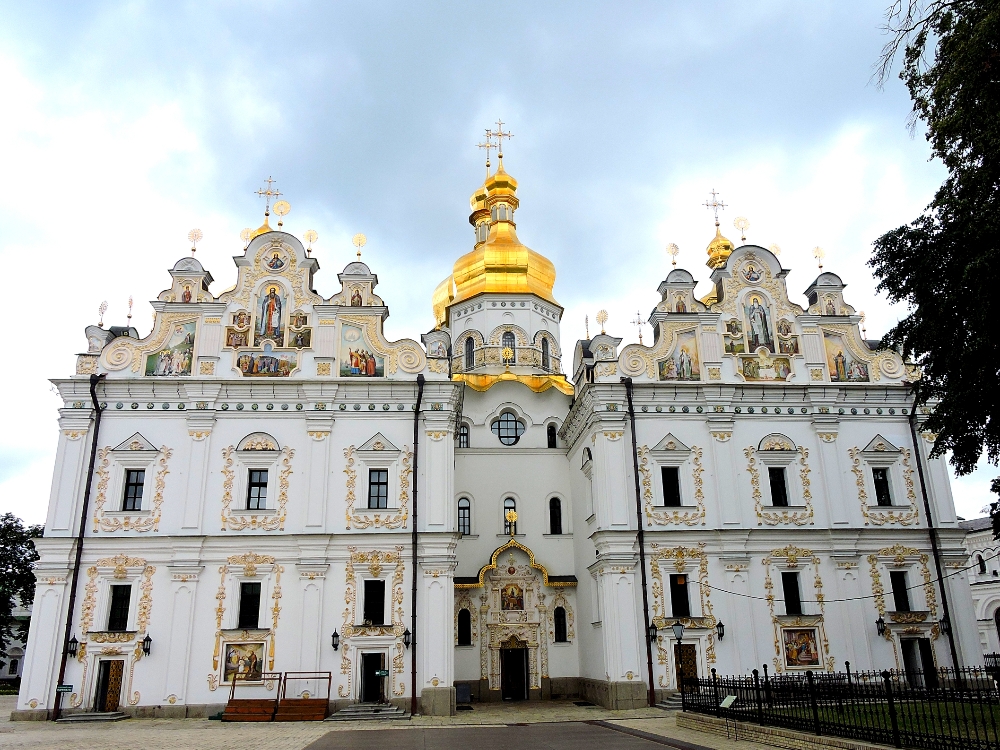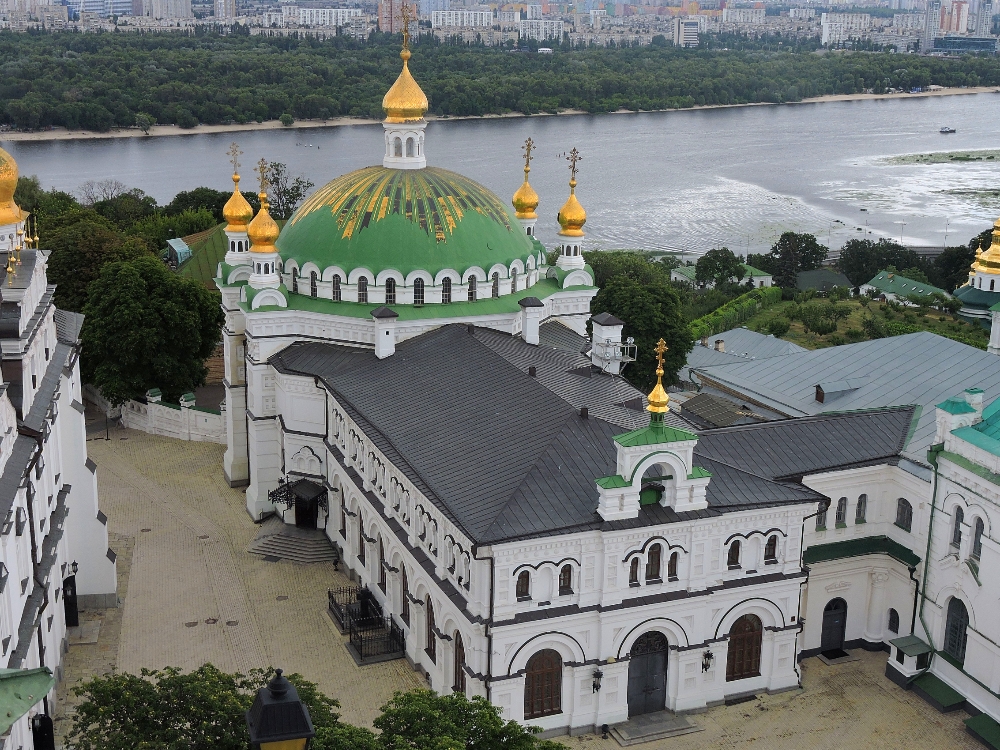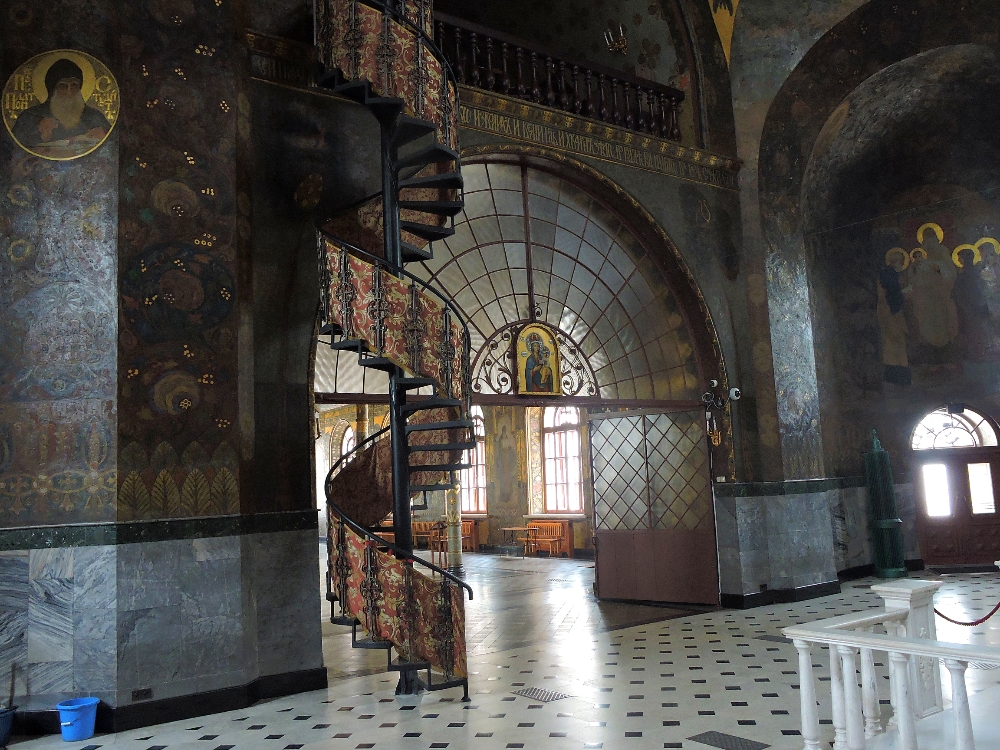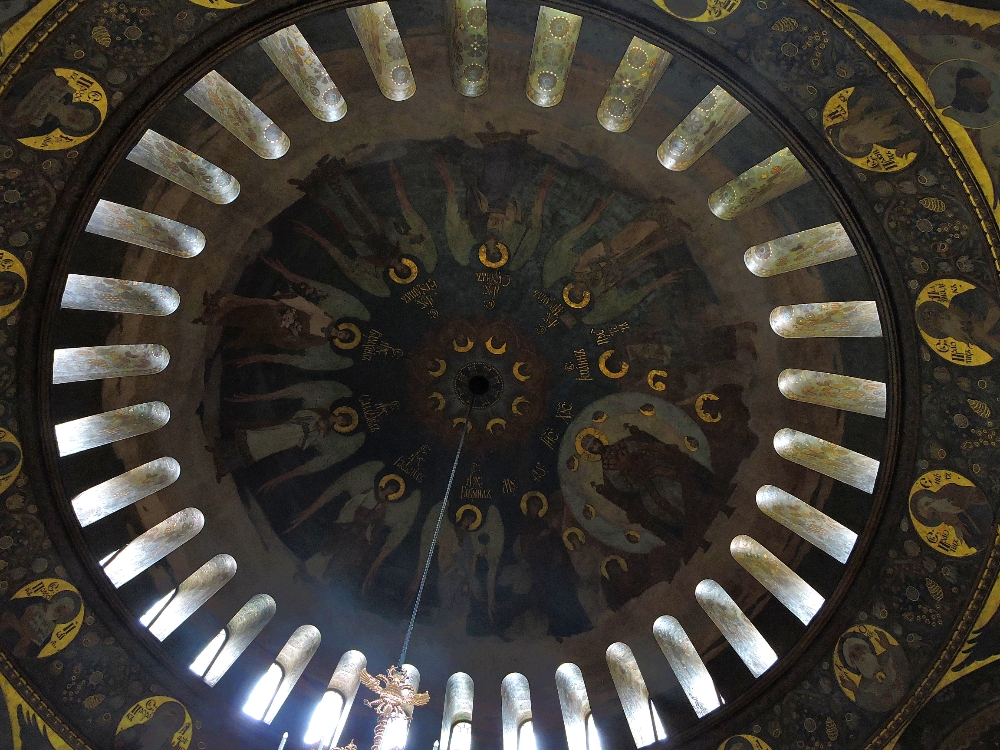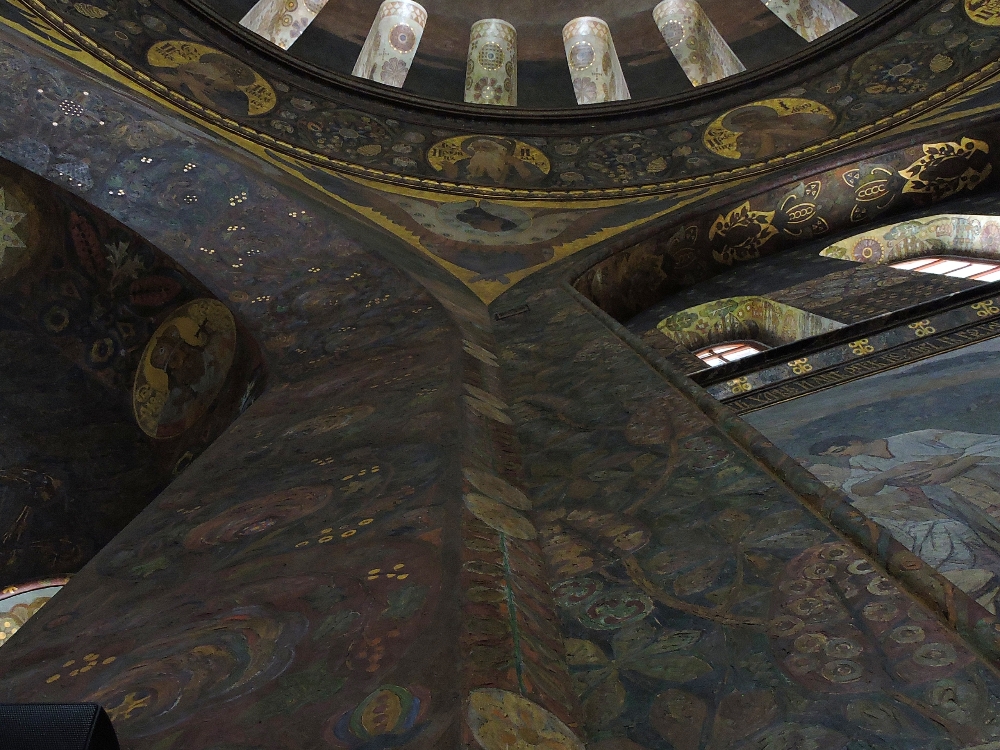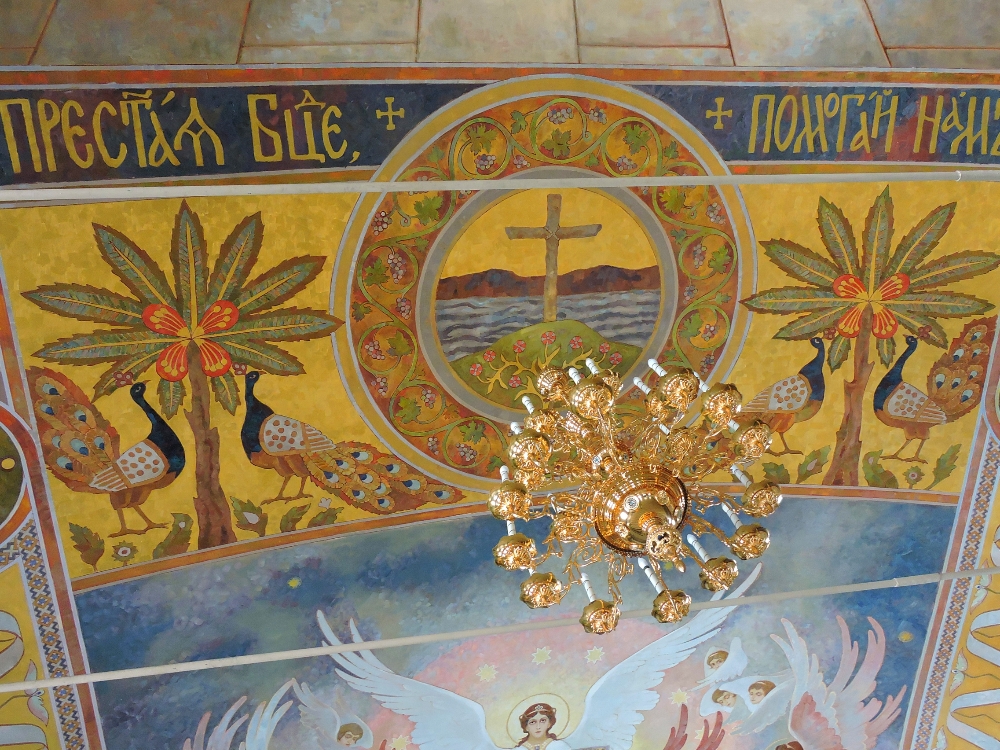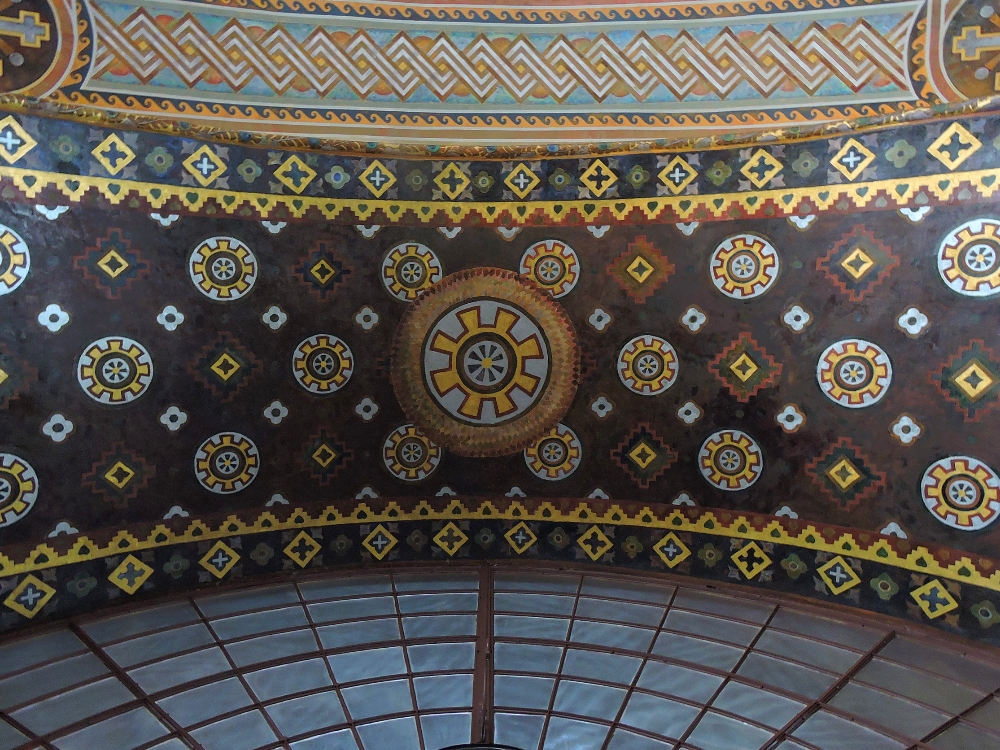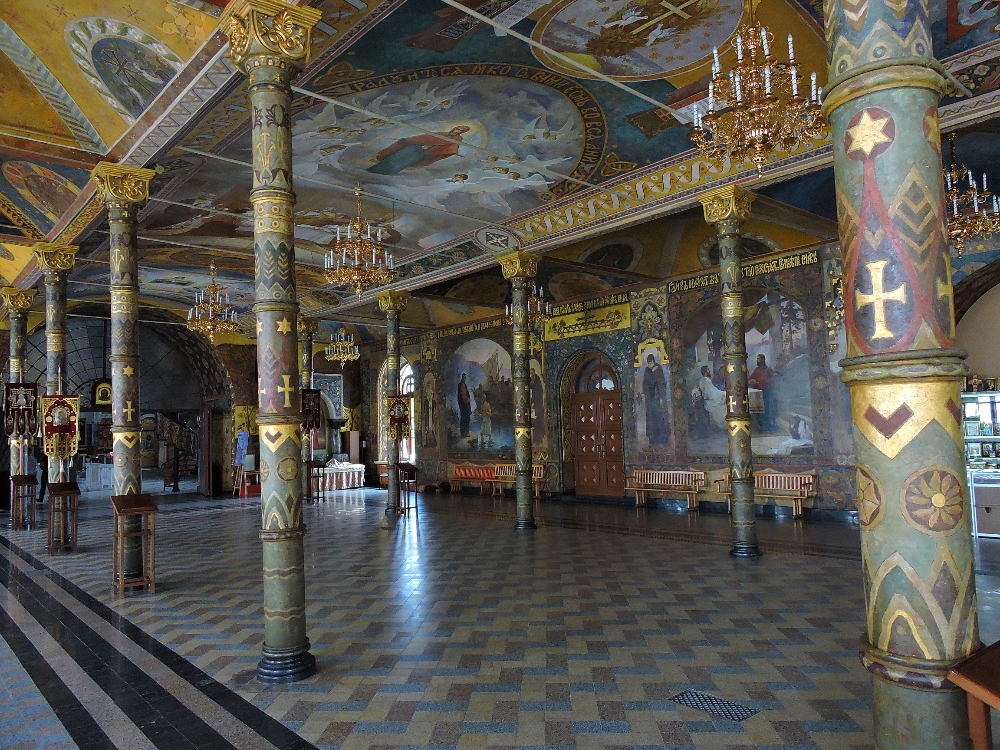The World Heritage List currently contains seven Sites in the nation of Ukraine, and I saw all six of them. The error in that statement was intentional, I am afraid, due to the frequently unwelcome effects of geopolitical interference in cultural affairs. One of the seven Sites, added to the List only in 2013, is a ruined ancient Greek city on the Crimean Peninsula. One year later, the entire peninsula was summarily annexed by Russia. Consequently, it is not a particularly easy place to visit, for the moment. However, its location in the southeastern part of the country would have meant that it would have been an unlikely visit for me in any case. The rest of the Sites were more conveniently placed along a reasonable route for me, so I didn’t have much difficulty in reaching all of those, whose quality ranged from excellent to a little quirky.
My first Site visit began on my first day in the country, when I arrived in the interesting city of Lviv. Like many cities in this region, long known as a crossroads of cultures, Lviv had spent segments of its history as part of various regional kingdoms or empires, and had also felt influences from more distant societies from its status as a center of long distance trade. This resulted in a city with a cosmopolitan blend of architecture, expressed well in its overall city plan, and particularly by its possessing a major Cathedral or Basilica from just about all of the denominations or sects found in that part of the World. Since I was finally starting to feel that the Tour was slowly beginning to get back on track after all the recent disruptions, my visit felt more relaxed and enjoyable than at many of the other Sites I had been to recently. The only drawback, which would continue to be an issue throughout Ukraine, was that there was a great number of utility, or transit power cables strung across every street, or open space, which spoiled many potential photography opportunities.
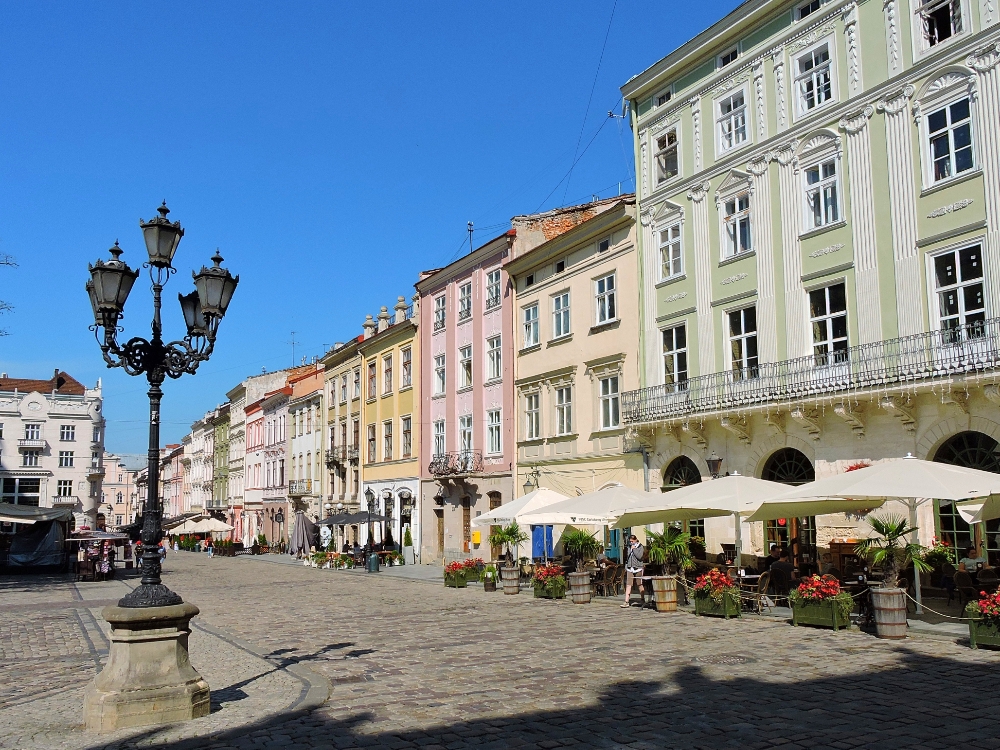
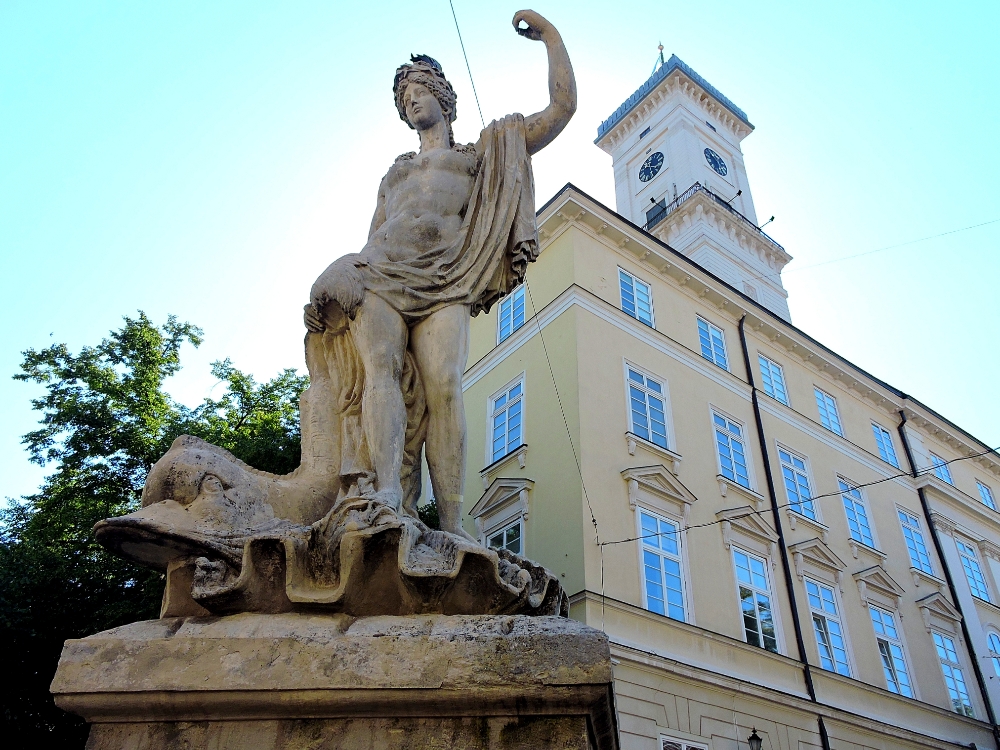
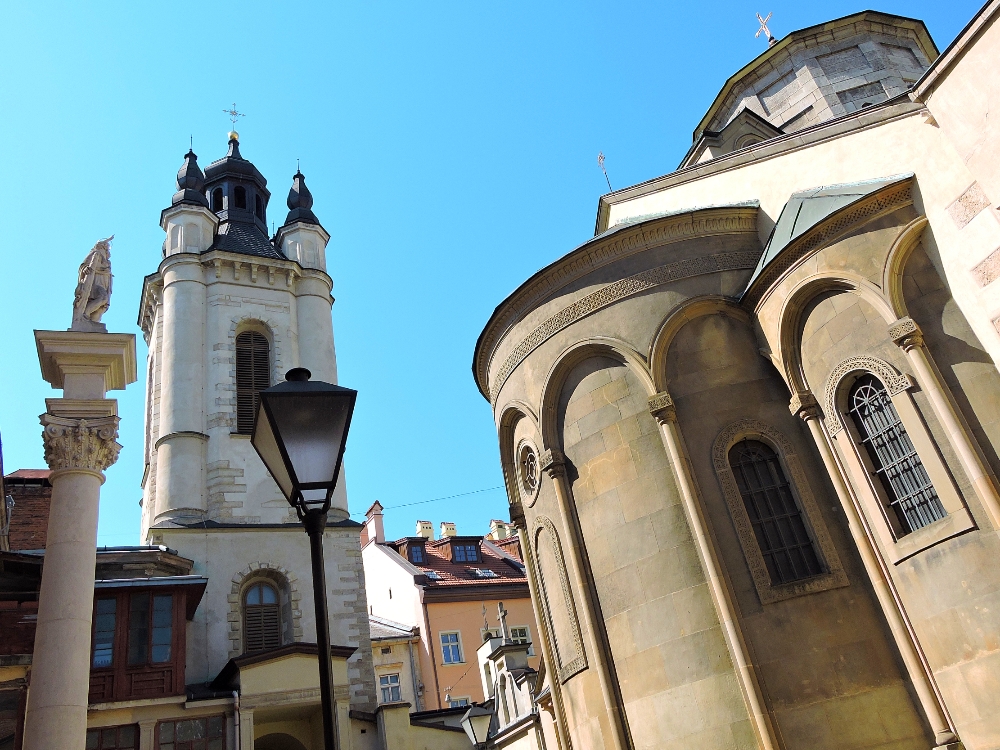
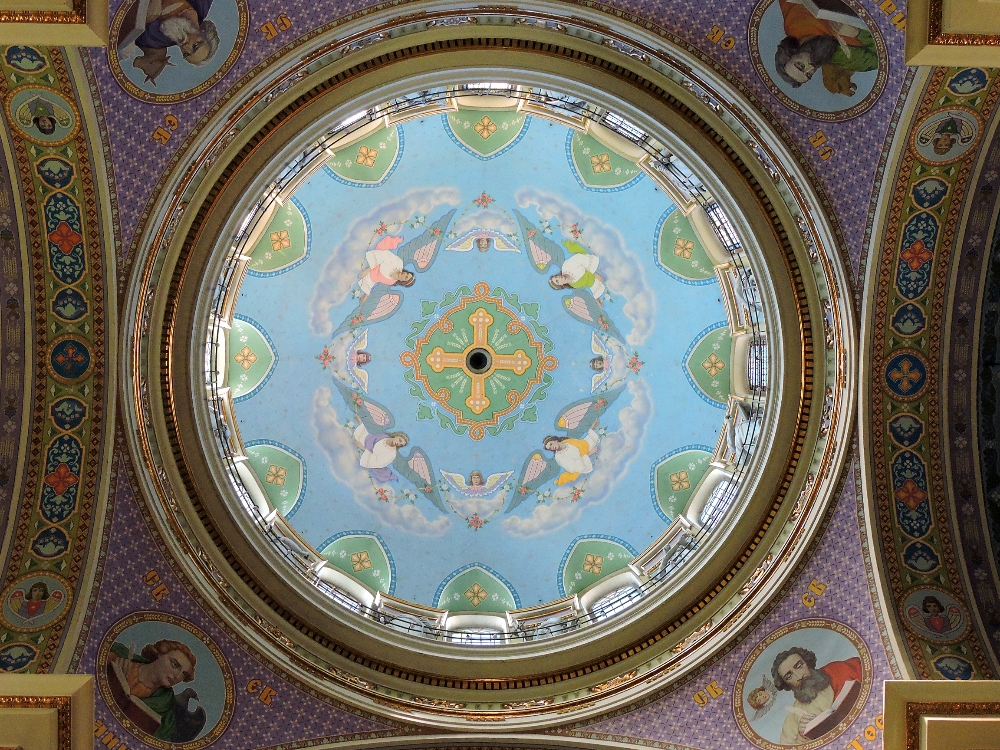
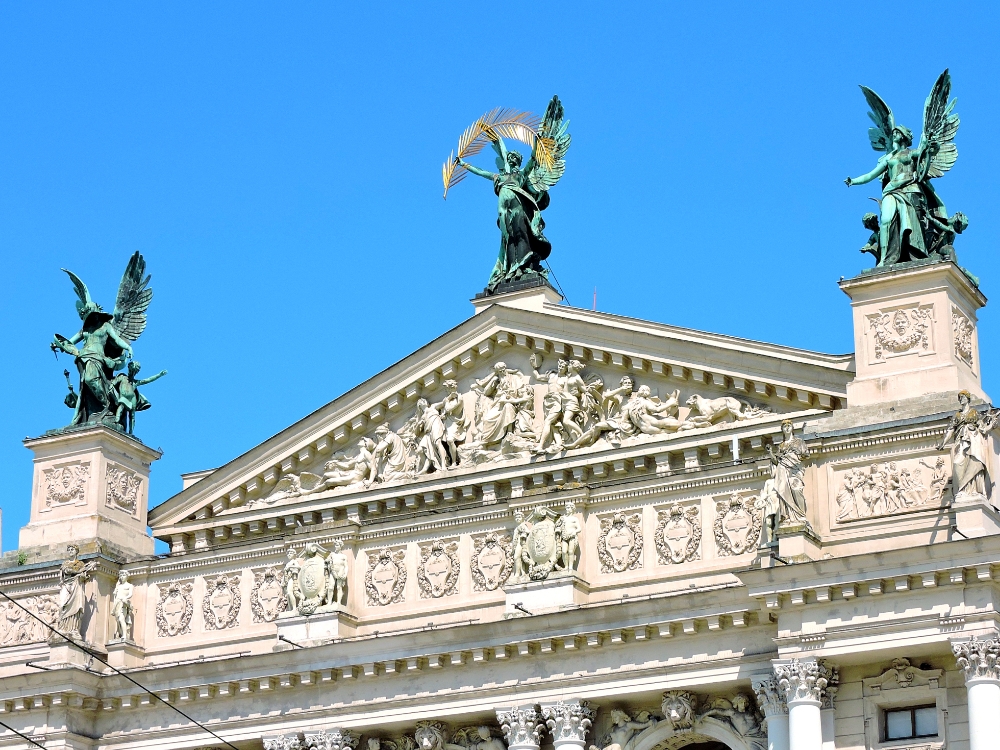
Next was the second of two Sites that both consist of a collection of historic wooden churches scattered around eastern Europe. The Site named Wooden Tserkvas of the Carpathian Region is comprised of sixteen churches, spread through southeastern Poland and southwestern Ukraine. I had plans to see four of the Churches in Ukraine, but had to modify those when I learned that the border crossing I intended to use was motor-only. In my revised route, two of the Ukraine churches dropped off, but were replaced by two others in Poland. That might have been for the best, since the first church in Poland, at Radruz, was the only example were I was able to go inside. In Ukraine, the two I saw, at Rohatyn, and Kolomyya seemed to be in need of a little more upkeep, and the latter had its original shingle roof replaced with decorative galvanized steel in 1990, decreasing its authenticity somewhat. This was an easy Site visit, but I am not really sure that all of these churches needed to be separated into two Sites.
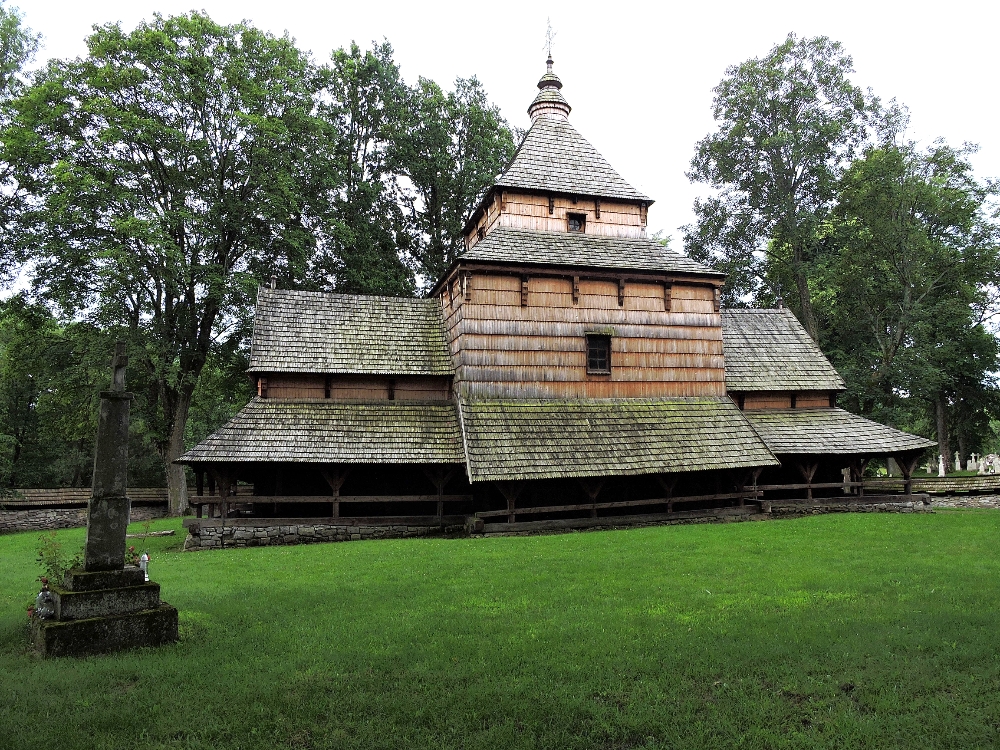
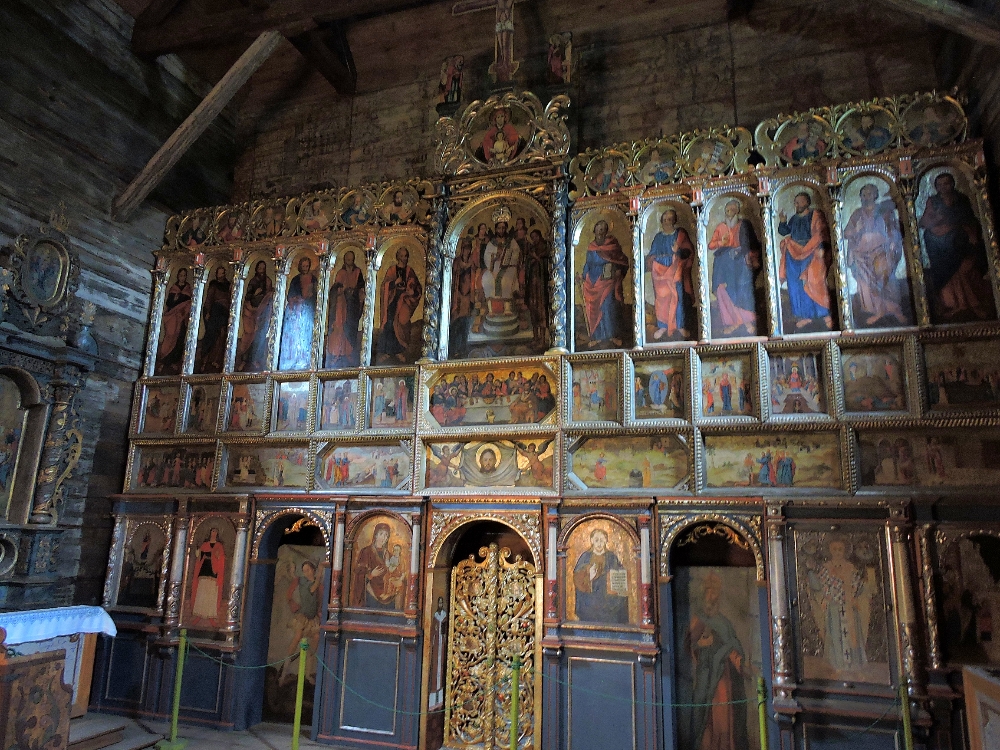
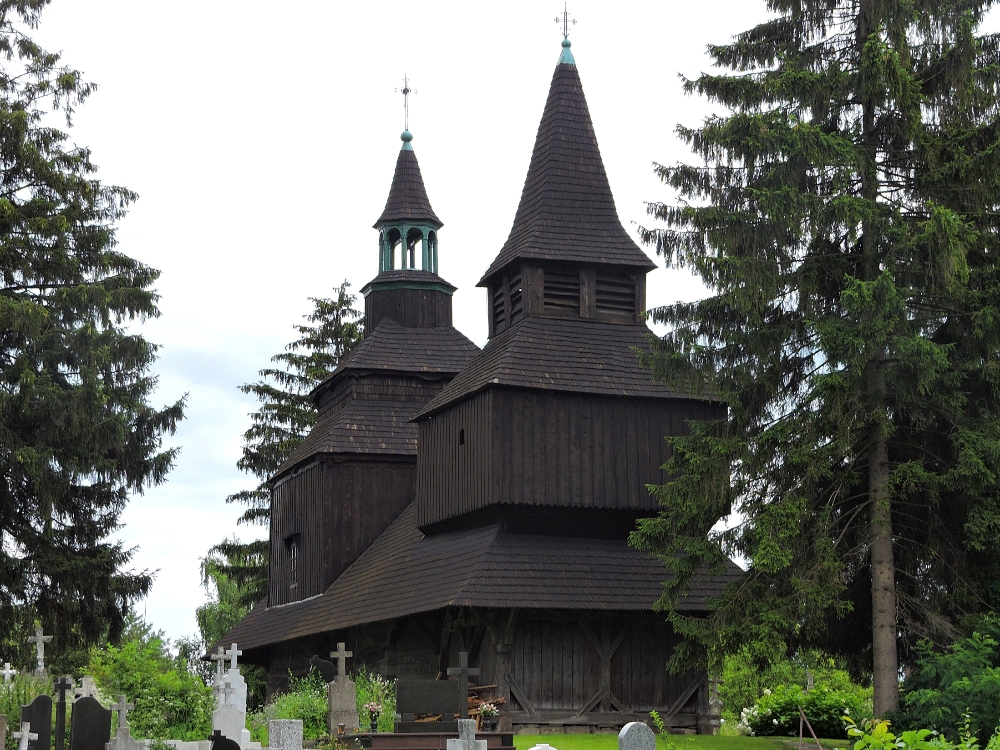
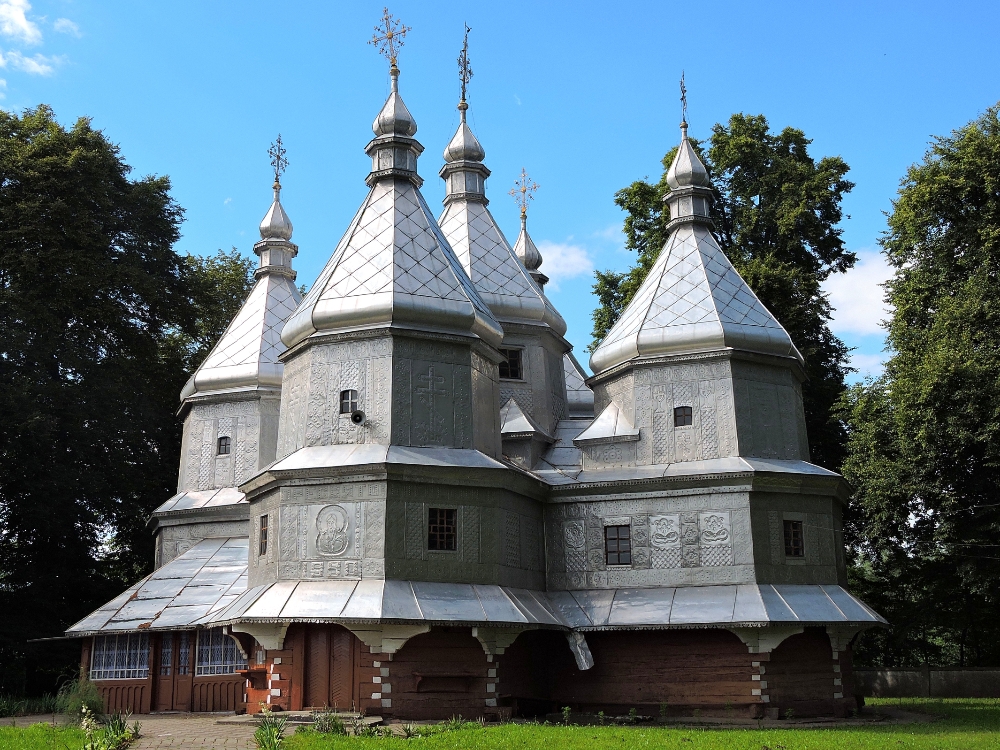
My third Site in Ukraine was a pleasant surprise for me, especially since its name, Residence of Bukovinian and Dalmatian Metropolitans, seemed rather confusing. I was not aware before my visit that Metropolitan
is a title in Eastern Orthodox religions that is roughly equivalent to Archbishop. The Residence is located in Chernivtsi, the interesting capital of Bukovina, so that part makes sense. But how could Dalmatians be involved? After the Austro-Hungarian Empire annexed Bukovina in 1774, there was no facilities anywhere for the Bukovinian Metropolitans, so the Hapsburg government arranged for a complex to be built in Chernivtsi, in part to build up their credentials with respect to religious tolerance. Earlier, there had also been an Orthodox enclave on the Dalmatian coast, but after various political changes the Metropolitans from there found themselves without a home, so they were taken in by the Residence in Chernivitsi.
However, none of this was the reason that this site was added to the List. Instead, it was included specifically for its architecture, as a excellent example of the Historicism style, which draws inspiration from the constructions of previous eras. In this case, Byzantine and Romanesque elements were incorporated to great effect. In fact, I was impressed that these brick buildings, ostensibly built for religious purposes, showed almost no typical religious elements in their designs, apart from the crosses atop their three domes. Today, the three main buildings, and an adjacent park, are the campus for a national University. I was able to enter for a very small fee, and in the afternoon, when I arrived, there was almost no one else around, perhaps due to the summer date, or because of the recent quarantine. Either way, that allowed me to wander around leisurely, and even take a couple of quick peeks in the interior. I absolutely found these buildings to be exquisite, architecturally, which was probably what really surprised me, and this ended up being one my most enjoyable Site visits made during recent months. Therefore, this Site gets a few extra images in this post.
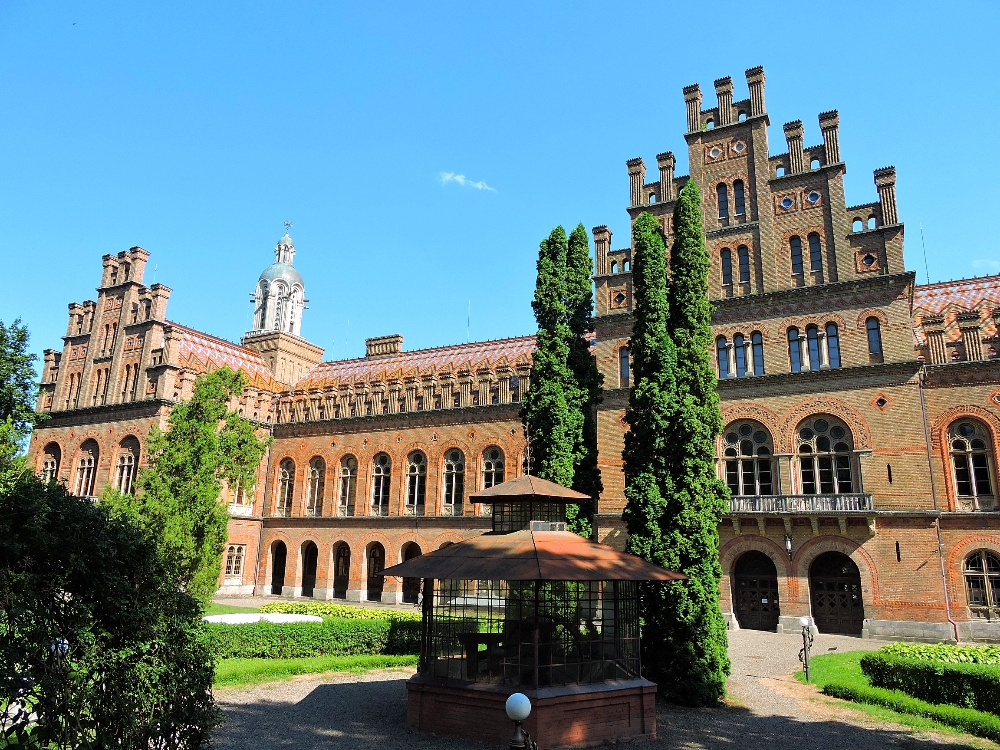
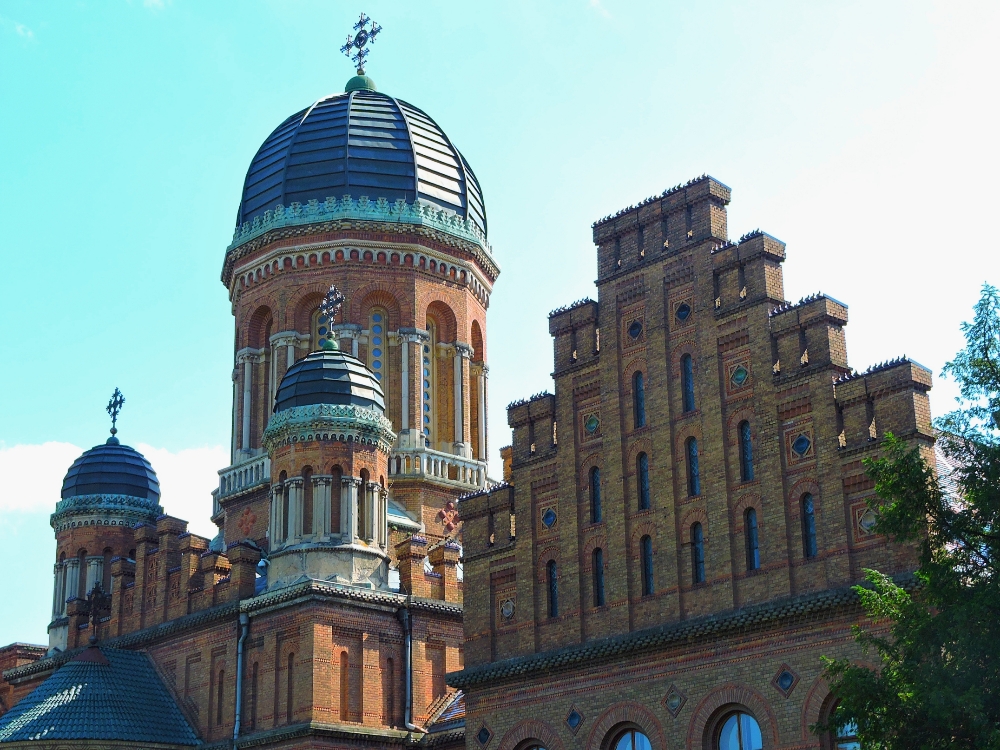
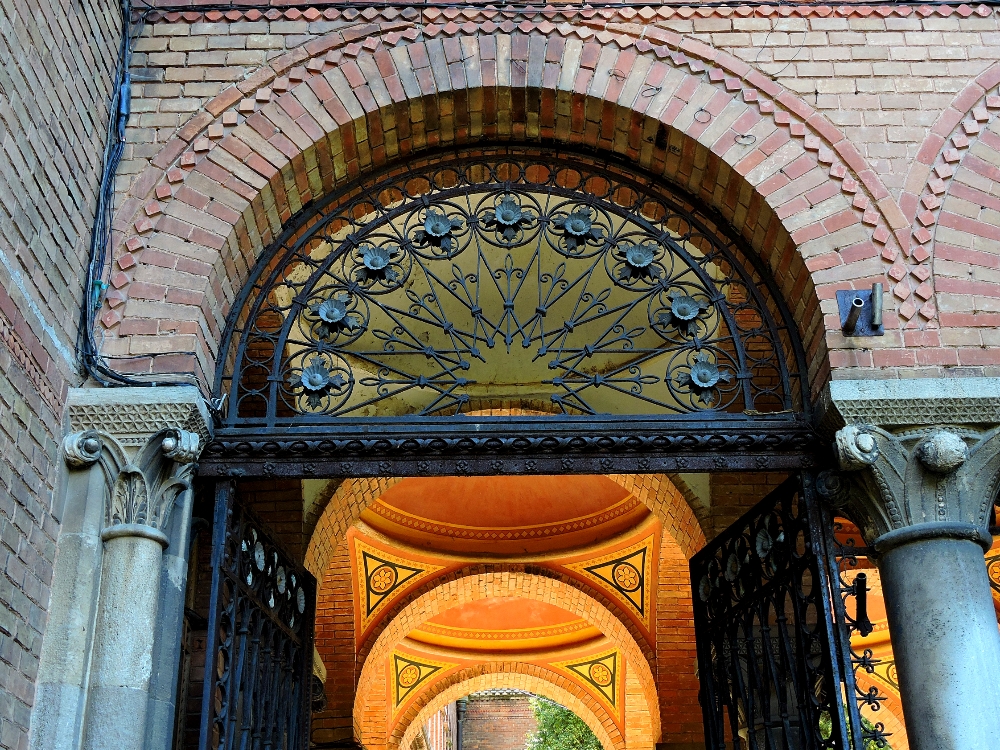
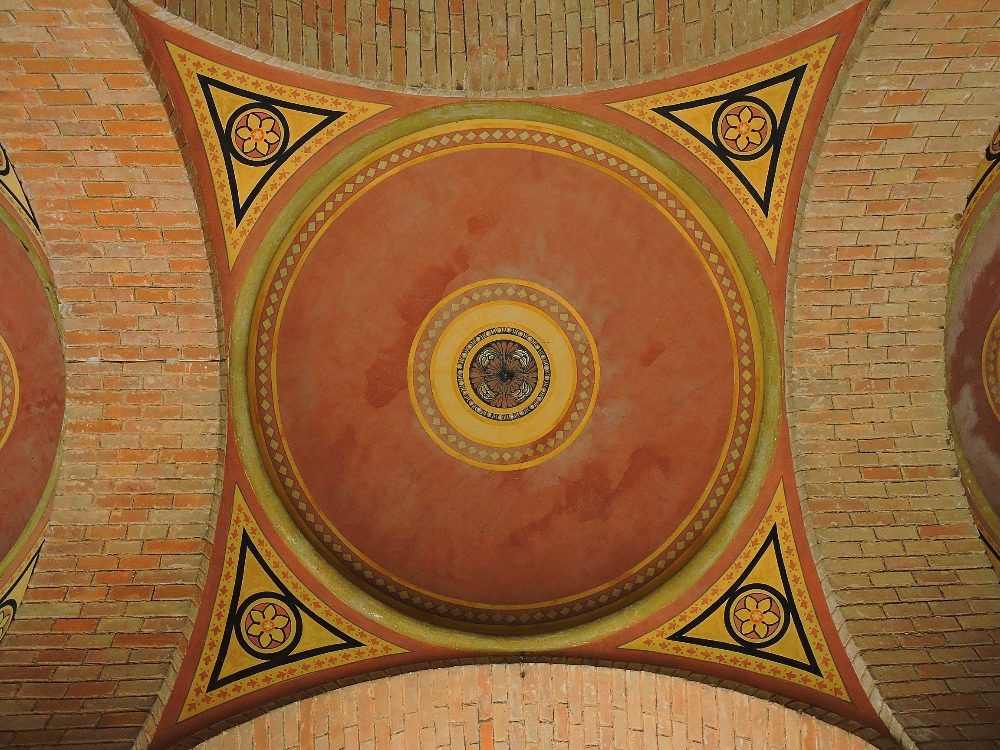
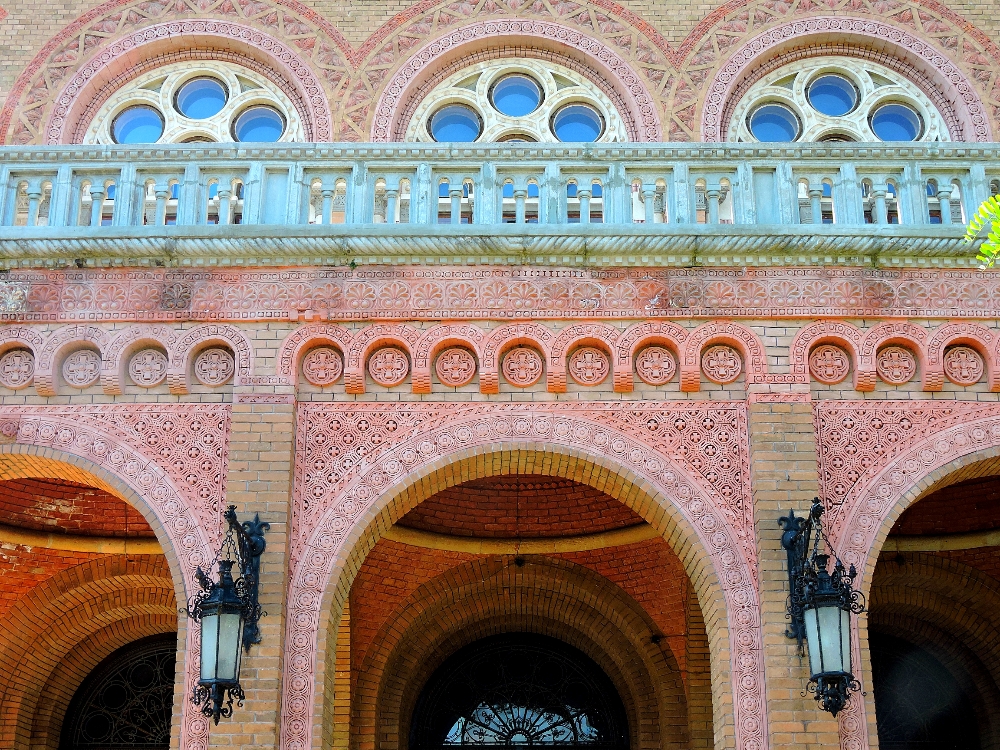
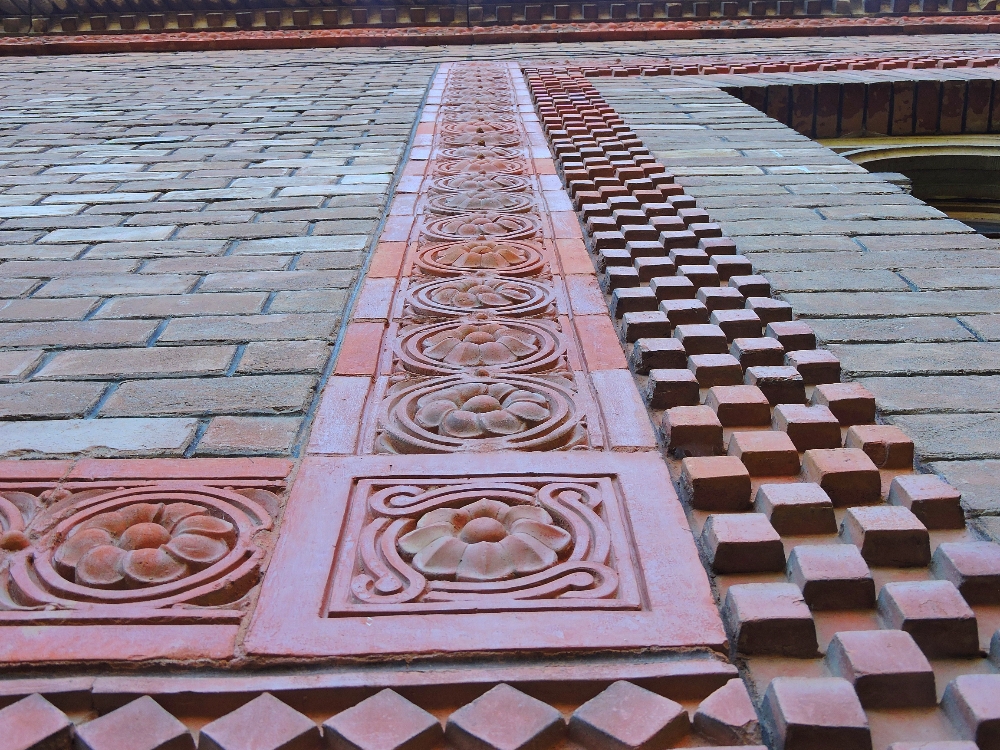
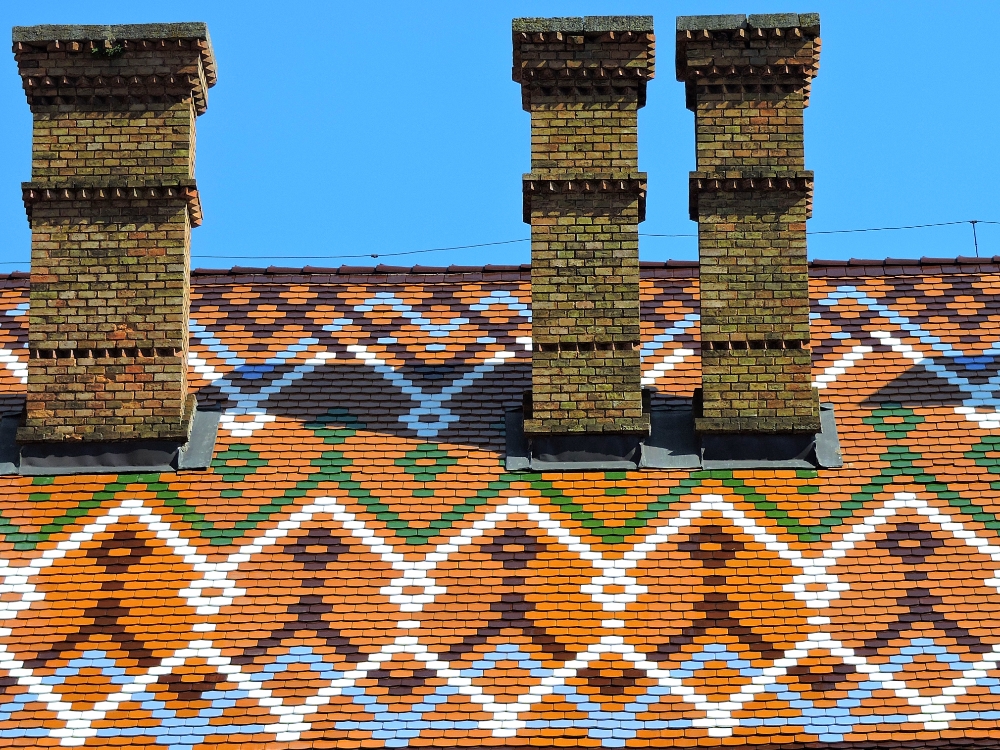
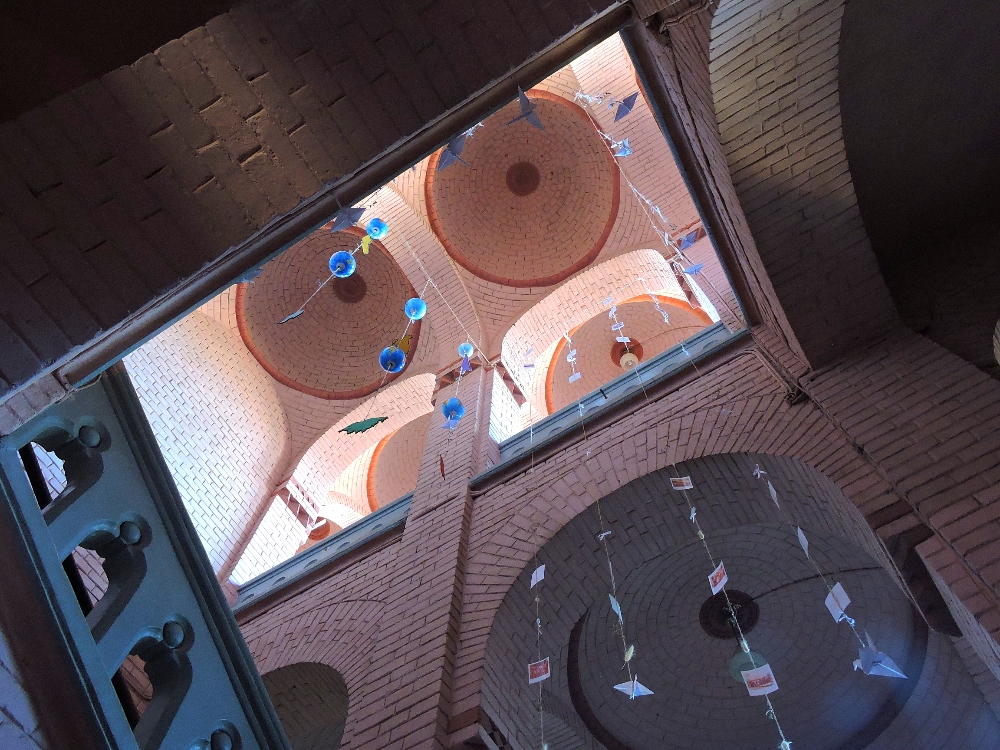
From there, I determined my route such that it would be possible for me to tally visits two small portions of two serial World Heritage Sites that are widely-distributed and multinational, and consist of individual components that are often situated in out-of-the-way places that are difficult to locate and may reveal little of visual interest once they have been. The two most separated parts of these two Sites lie 3,600 kilometers apart, but I managed to locate a pair close to my route separated by a mere fifty. The first was the very small, easternmost component of a site called Primeval Beech Forests of the Carpathians and Other Parts of Europe. Primary forests have essentially been absent from Europe since the Middle Ages, but there are a number of remaining fragments of very old forests that are dominated by the species European Beech. I enjoy forests, of course, but selecting a component of this Site to visit was not a simple matter. Some may be small plots surrounded by larger areas of reforested lands, and others, when closely examined using satellite view, may contain regularly-shaped areas where all the trees appear different in height from the rest of the forest, indicating that they are not quite as Primeval as advertised.
The unit I selected, a small protected forest near Sataniv in central-western Ukraine satisfied all of the requirements I had. Its appearance by satellite suggested that it had a mature, unbroken canopy, that extended all the way to the edge of the protected area. Additionally, that edge was easily accessible via a short dirt road that followed the abrupt border between the forest and an adjacent field of sunflowers. Once I was there, entering the forest was simple and wandering along its floor was just as easy since the thick canopy let through an insufficient amount of light to support any significant plant life on the ground. Beech really was the dominant species there, and their straight, branchless trunks created a forest scene that was quite unlike others I have previously seen. I was also able to acquire some shots of one of my favorite photography subjects, backlit leaves, and in this case they clearly show the parallel veins that are an identifying characteristic of Beech. I might have stayed longer to continue looking for birds, or other wildlife, however the most abundant creature in the forest that day was the mosquito.
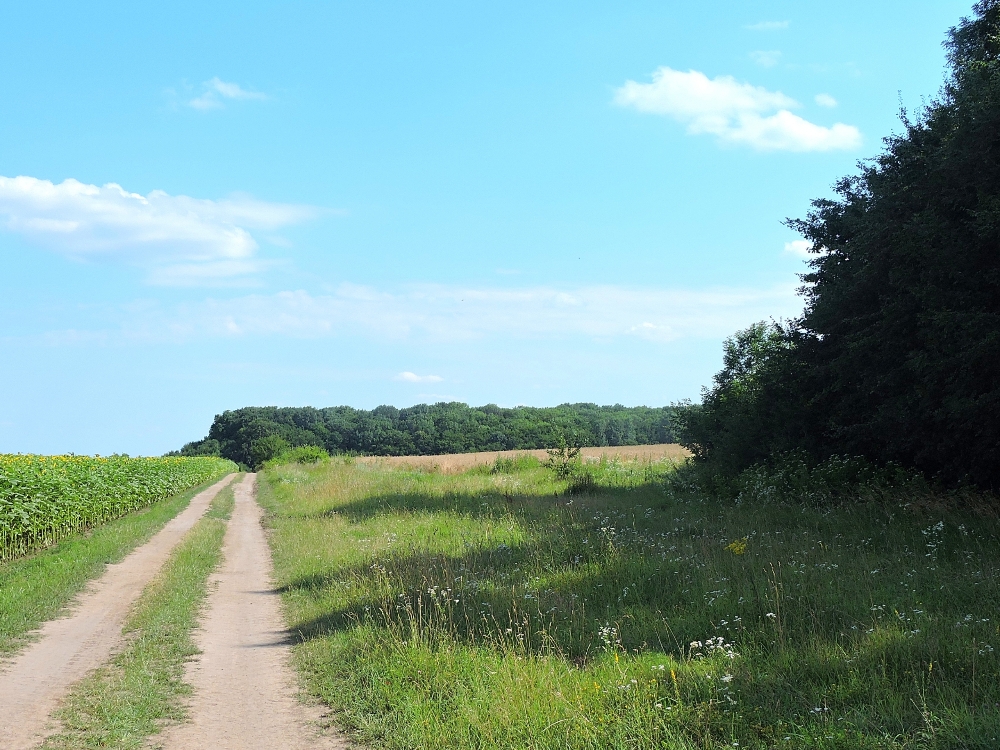
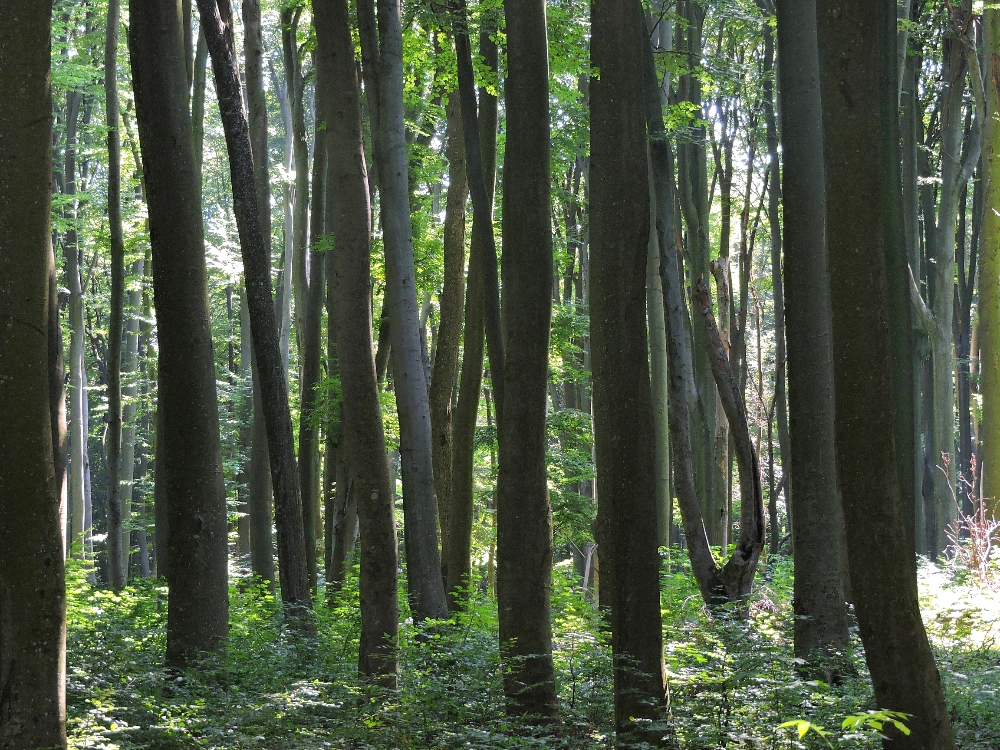
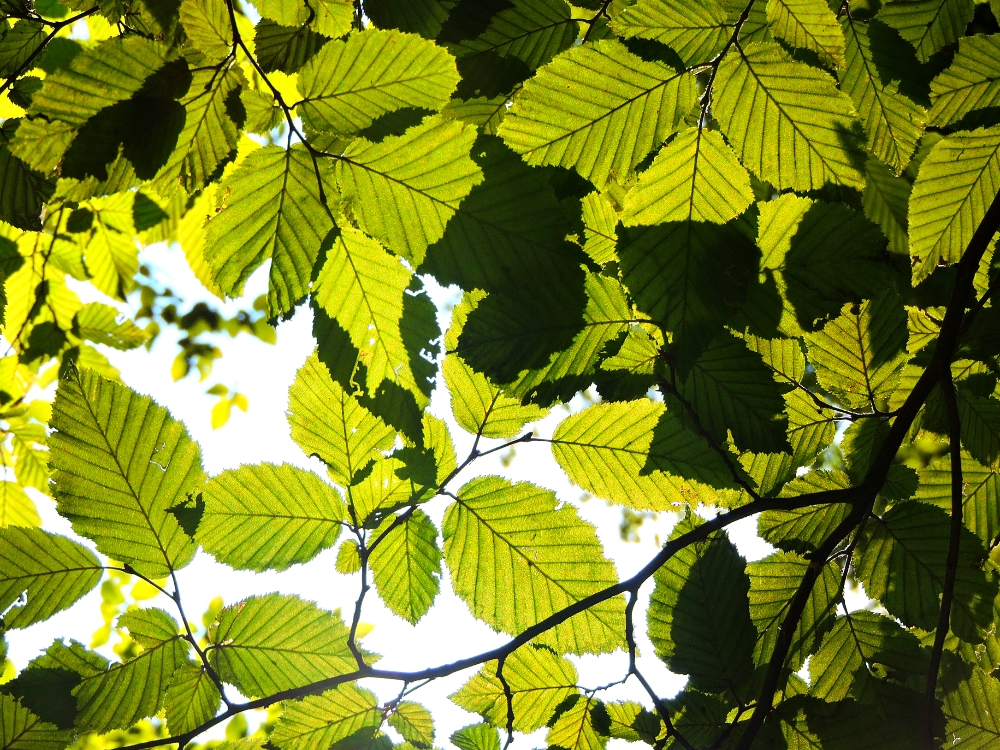
The next Site was possibly the most esoteric Site I will ever visit. In fact, among the community of people who try to visit WHSs, this Site is often a bit of a humorous quest that only a dedicated few will eventually complete. In the early nineteenth century Friedrich Georg Wilhelm von Struve began a project to lay down hundreds of surveying triangulation points along a specific meridian, running from the northern tip of Norway to the Black Sea. This was used to more precisely determine the size of the Earth. To commemorate this achievement, UNESCO created a Site composed of thirty-four of the remaining points, spread through ten countries, called the Struve Geodetic Arc. The catch is these are often located in forests, croplands, or similar hard to reach places, and once one has located the actual spot they may be rewarded with a pole, stone marker, a small plaque, or possibly nothing, to reward the effort. In Ukraine, three of these points surround the city of Khmelnytskyi, and I, logically, chose to stop at the only one that seemed to be located close to a bumpy, but usable, road, near a small town named Hvardiis’ke. At this point, atop a small hill, surrounded by potato fields, are a wooden Orthodox Cross, a tall metal tripod beneath which is a metal disk located on the actual survey point, and a modern stone monument, which displays the usual WHS statements on its face and the nice etching shown below, on the reverse. That was it, my Struve experience.
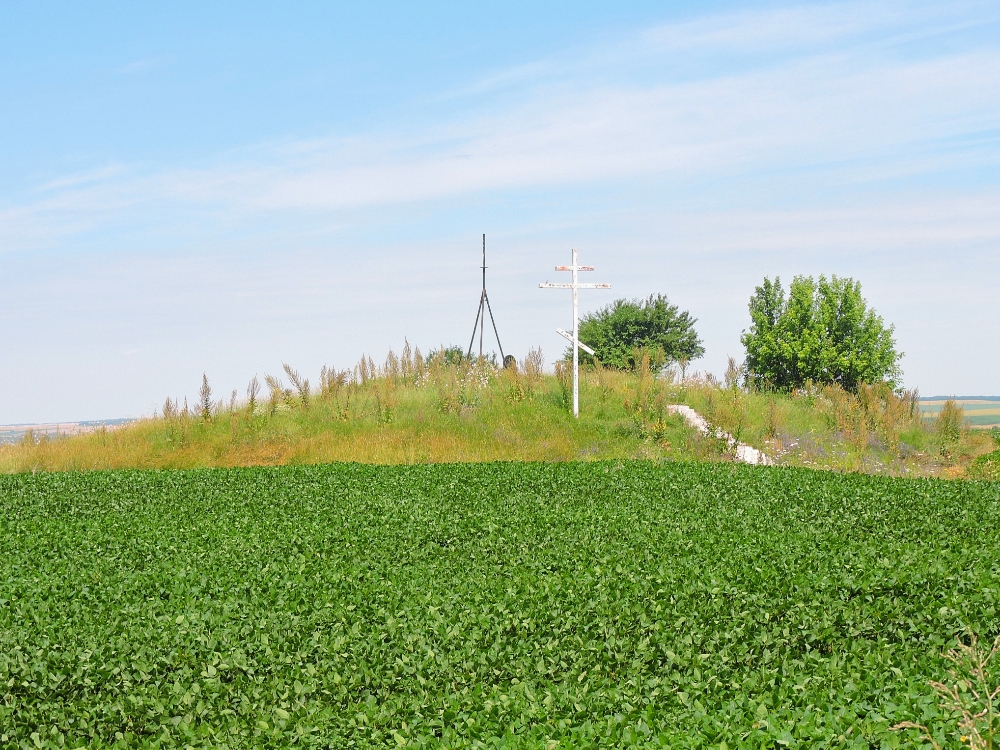
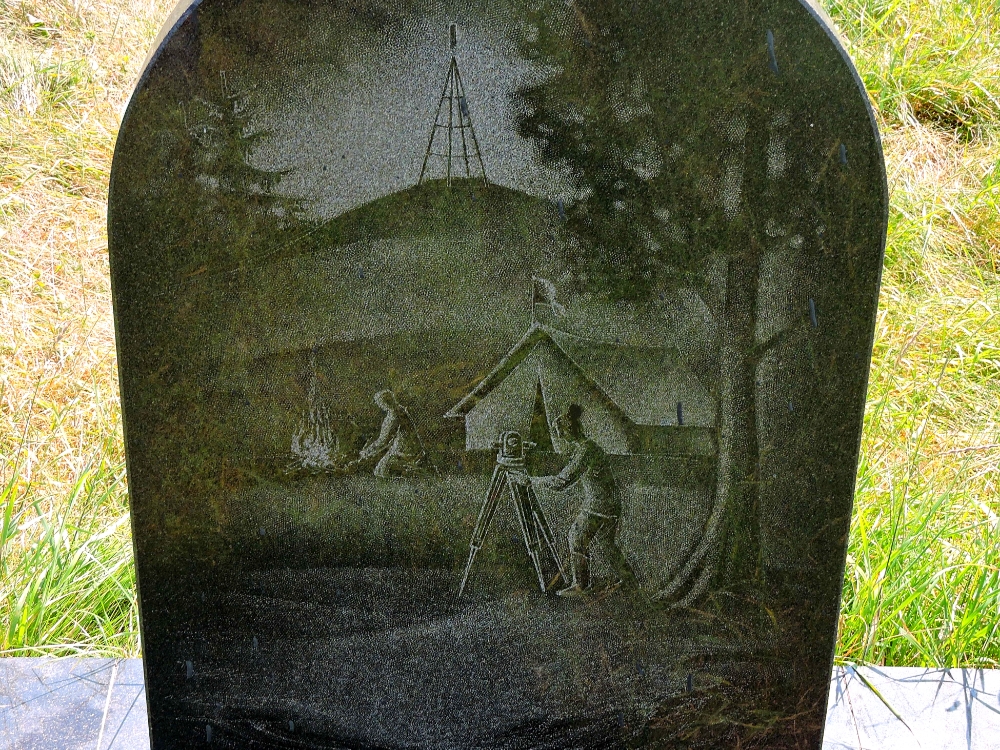
In many situations I often try to save the best for last, and that was the case with my Site visits in Ukraine, though I really didn’t intentionally plan for that. The capital city, Kyiv, is large and contains many interesting landmarks. However, as a city that has been totally destroyed more than once over the centuries, many of those are restored, or have been built fairly recently. Two religious compounds that have existed for around one thousand years, with their major components having been continually maintained or rebuilt during that span, have been combined into a single, extremely impressive, World Heritage Site. The first part I visited, Saint Sophia’s Cathedral, was just a few blocks from where I was staying in the city center, and was a relaxing and enjoyable place to visit. Today it is part museum and part archeological site, which made it even more interesting for me. The exteriors of the Cathedral, its lovely Bell Tower, and some of the other buildings, have been constructed in a Ukrainian Baroque style, while the interior of the Cathedral is a more Byzantine design. That part somewhat reminded me of the Rock-Hewn Churches in Lalibela, Ethiopia, which are also from the Orthodox tradition, though here the walls are more elaborately painted. One aspect that I really appreciated was that many of the frescoes, and other design elements, have a section that has been left unrestored, so that one can see both the art in all its glory, and also how the original painting would appear today.
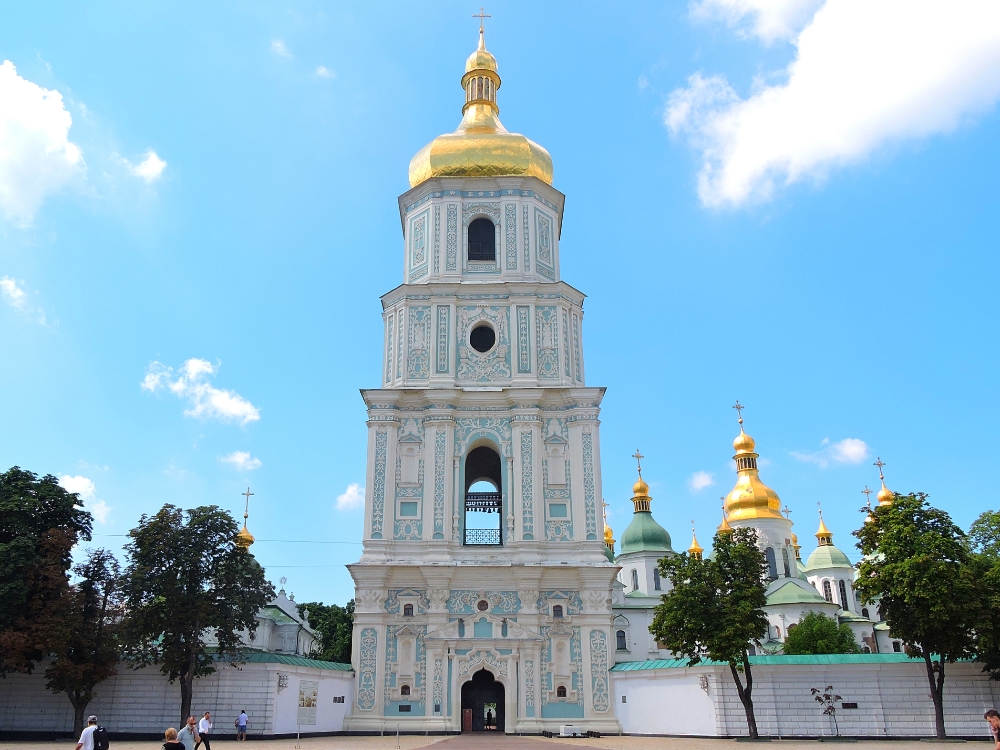
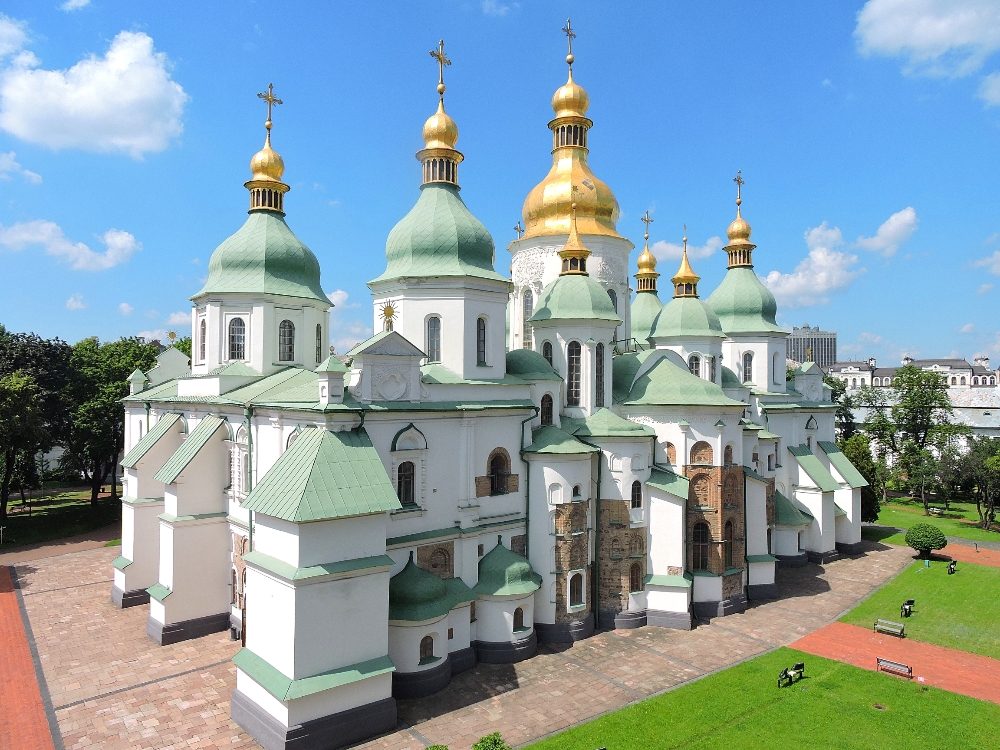
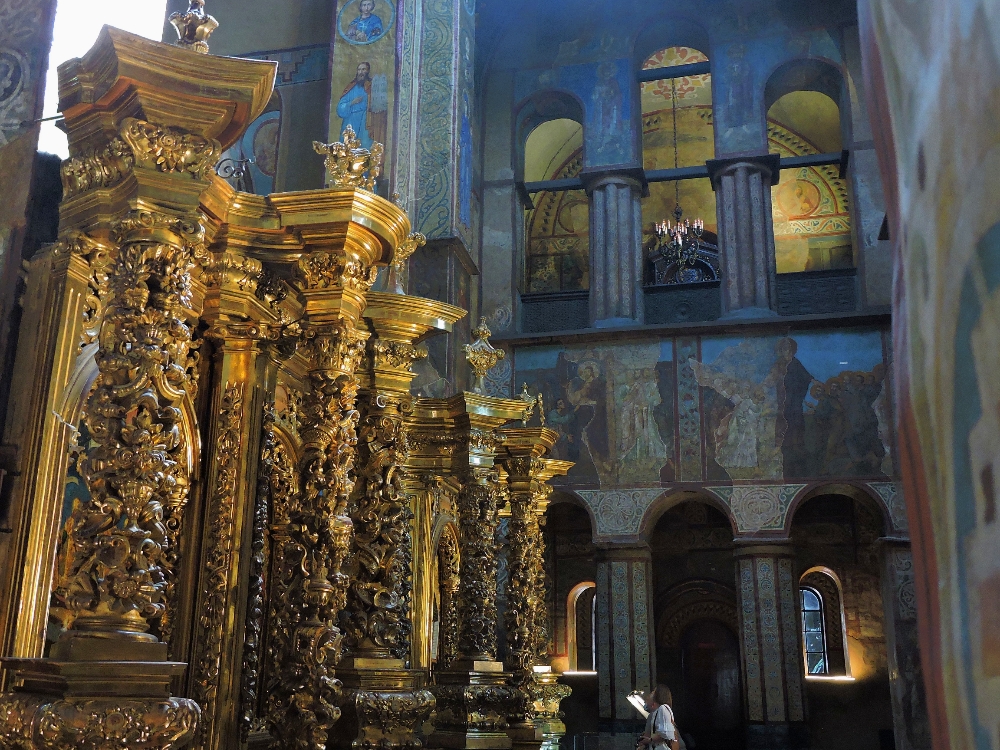
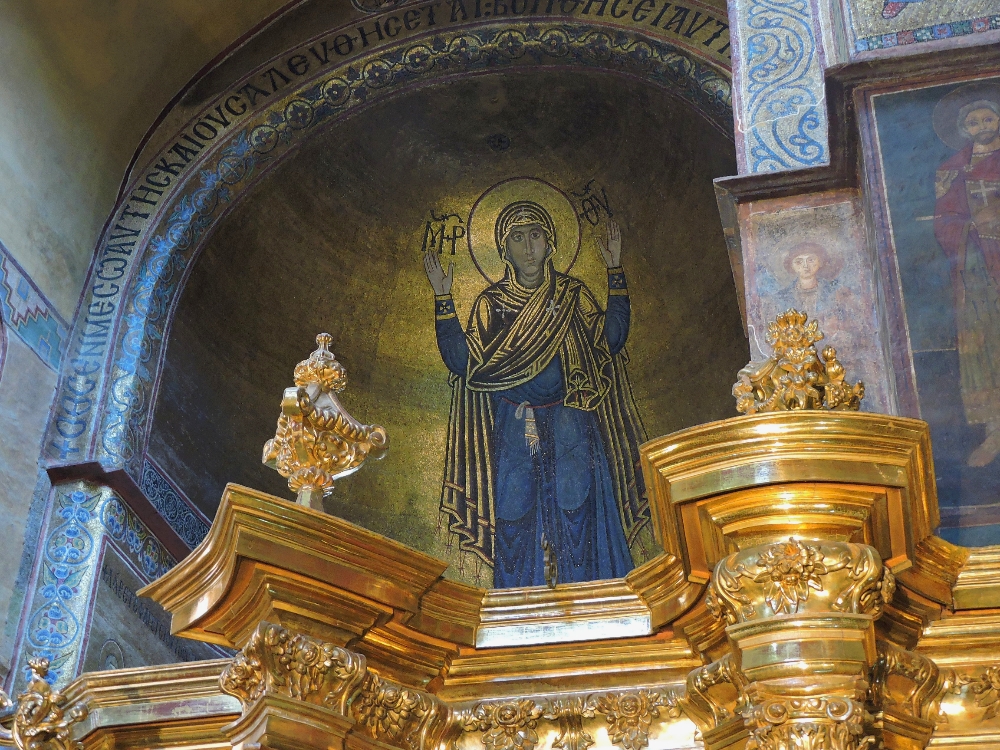
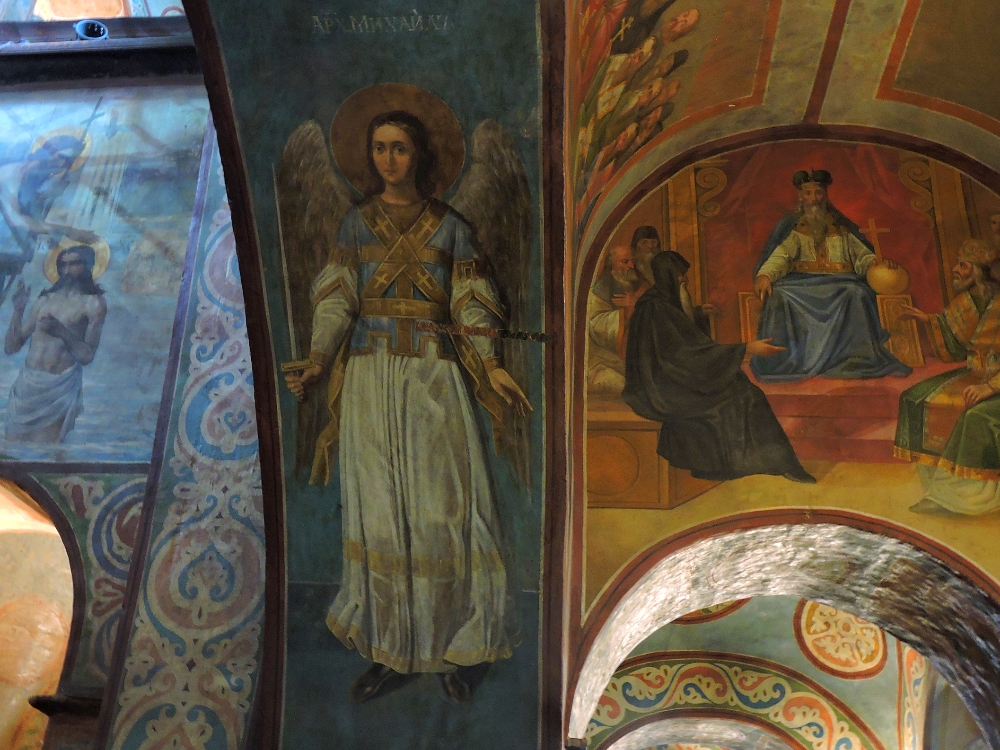
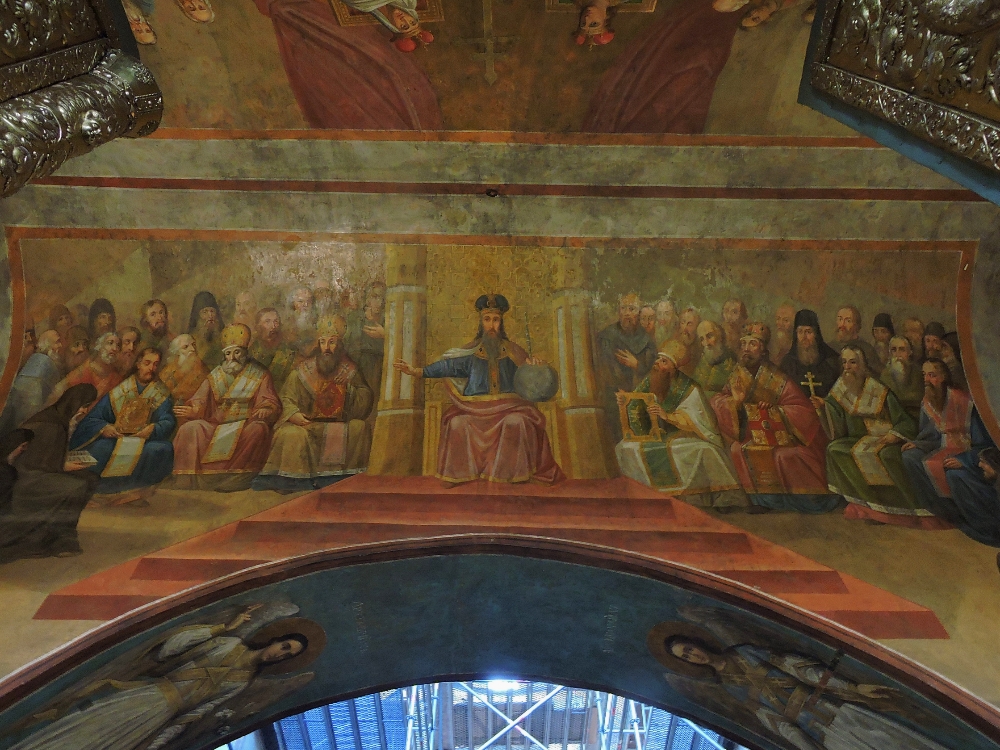
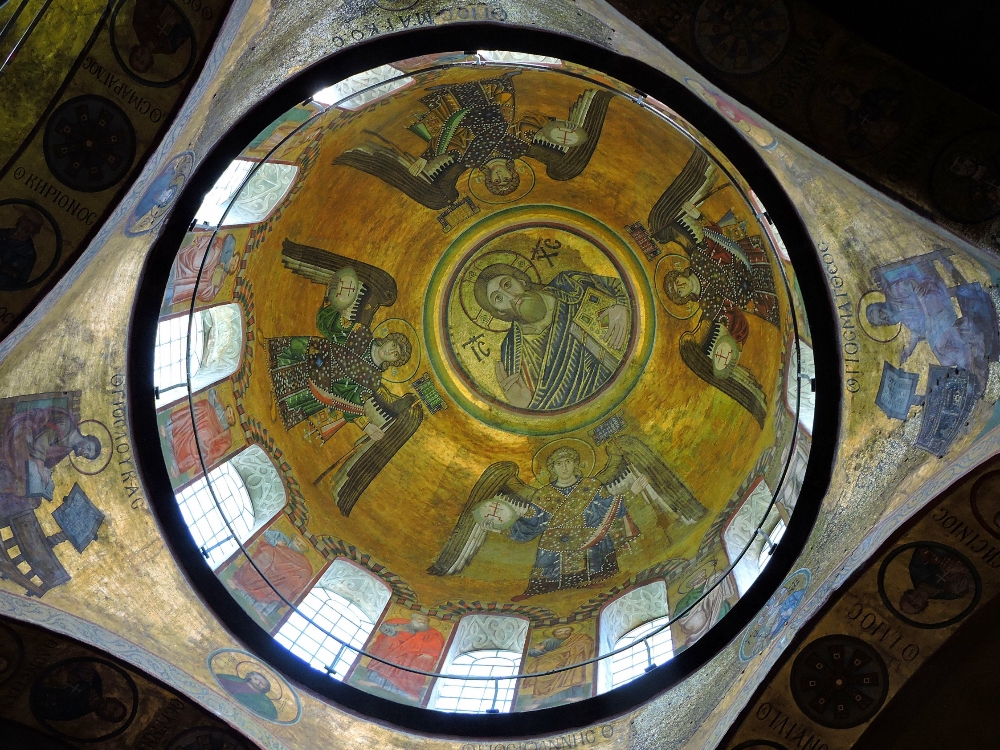
The second component is the Kyiv Pechersk Lavra, or Grand Cave Monastery of Kyiv. Though buildings have been added over the years, and there was extensive damage in the 1940s, the Site has remained a quiet and beautiful place for repose, relatively unchanged, for a millennium. One notable feature is an extensive network of catacombs, where caskets of Saints and other notable people are stored, a small portion of which are open for visitors. The museums located in the compound also contained excellent collections, and I found the exhibit of metal artifacts from the Scythian Culture especially fascinating. As a working Monastery, all of the buildings were in fine condition and were extremely beautiful. However, I was most impressed with the Refectory Chambers with Church of the Saints Anthony and Theodosius, which was a fairly recent addition, having been built in the late nineteenth century. It is said that the interior exhibits a Russian Revival style, with Modernist influences. I didn’t really pick up on the latter aspect, but what I noticed was that the interior was basically one large fresco, painted with thick brush strokes and a muted palette. That produces a dim, organic feeling that made me feel like being outdoors at dawn. In fact, that building is probably now on my list of five most beautiful buildings of the World. However, if the next month goes according to my recently-revised plans, I may soon visit a few others that could give it some strong competition. I hope that happens!
